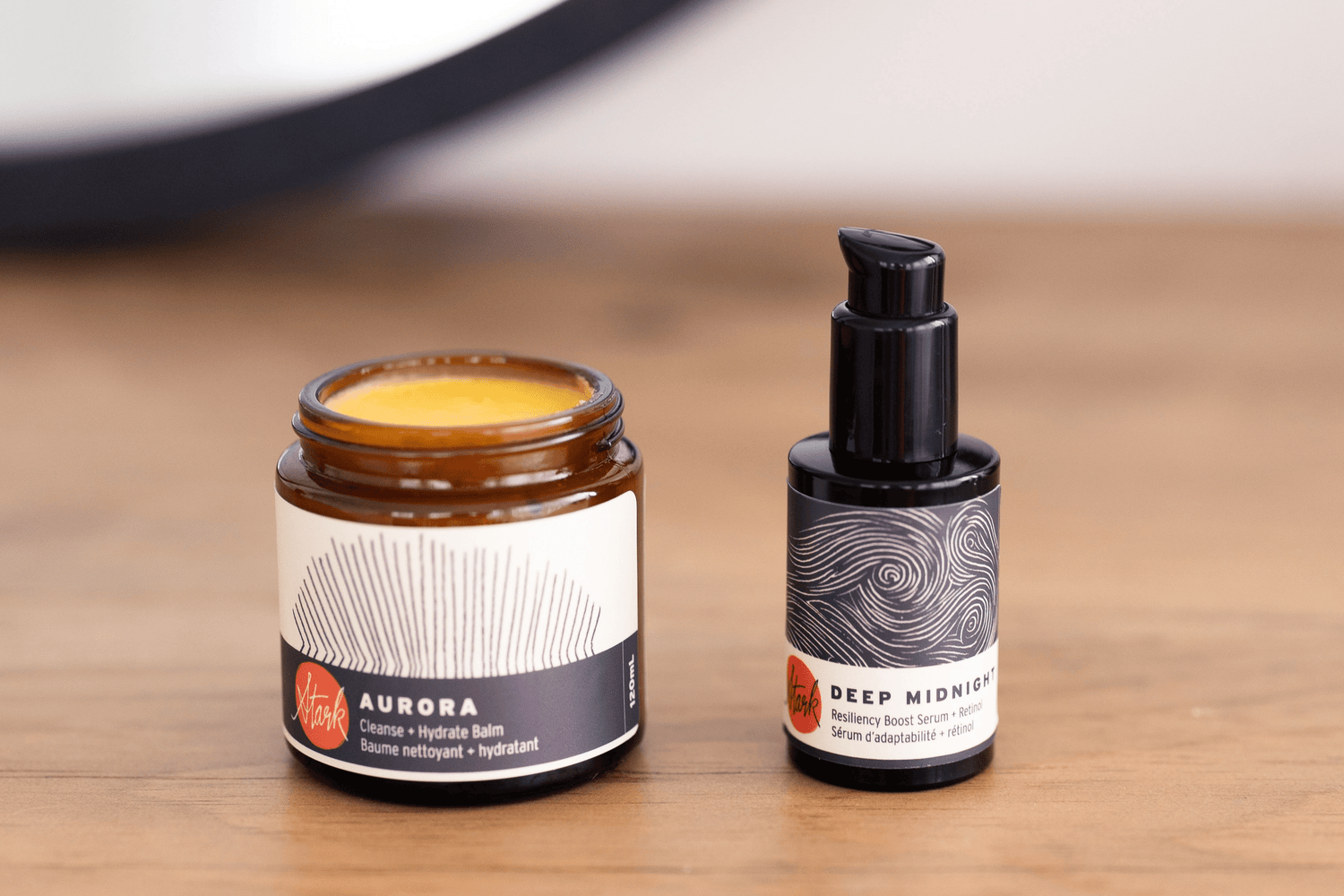
The Sweet Sabotage: How Sugar Secretly Ages Your Skin (And Why Your Sweet Tooth Needs a Reality Check)
Share
Here's a plot twist your taste buds weren't expecting: that innocent sugar addiction might be writing checks your skin can't cash. While we're busy counting calories and worrying about energy crashes, sugar is conducting a stealth operation on our largest organ that would make any skincare enthusiast weep into their green juice.
The Real Effect of Sugar on Skin: It's Complicated (And Not in a Good Way)
Let's decode what's actually happening when you indulge that sweet tooth. The effect of sugar on skin goes far beyond the occasional breakout—we're talking about a complex biochemical drama that unfolds at the cellular level, complete with plot twists that would make a soap opera jealous.
Skin Glycation: The Science Behind Sugar's Skin Sabotage
Meet glycation, the process that sounds like a fancy chemistry term but is actually your skin's worst nightmare. Skin glycation occurs when excess sugar molecules in your bloodstream decide to crash the party by binding to collagen and elastin fibers—you know, those VIP proteins responsible for keeping your skin firm, bouncy, and generally fabulous.
This sugar-protein mashup creates what scientists call Advanced Glycation End Products (AGEs), and trust me, the acronym is as ominous as it sounds. These molecular troublemakers are essentially skin aging accelerators, contributing to wrinkles, sagging, and that general "where did my glow go?" phenomenon.
The Science Speaks: Research Reveals Sugar's Skin Betrayal
The Journal of Investigative Dermatology delivered some sobering news about skin glycation when researchers discovered a direct correlation between high blood sugar levels and AGE accumulation in skin tissue. Translation? Your skin is literally keeping score of every sugar splurge, and the tally isn't pretty (Vlassara et al., 2016).
Sugar's Inflammation Station: Why Your Skin Throws Tantrums
Here's where the effect of sugar on skin gets particularly dramatic. When you consume excessive sugar, your insulin levels spike like they're auditioning for an action movie. This insulin surge triggers a cascade of inflammatory responses throughout your body, creating the perfect storm for acne development.
Think of it as your skin's equivalent of a toddler meltdown—complete with increased sebum production, clogged pores, and an all-you-can-eat buffet for acne-causing bacteria. The American Journal of Clinical Nutrition confirmed this connection, showing that high glycemic diets (hello, refined sugar) and acne have a relationship status of "it's complicated" (Smith et al., 2007).
The Accelerated Aging Express: How Sugar Fast-Tracks Time
The effect of sugar on skin aging deserves its own documentary series. Beyond creating AGEs through skin glycation, sugar consumption disrupts the delicate balance of collagen and elastin fibers that keep your skin looking like it belongs in a skincare commercial rather than a "before" photo.
British Journal of Dermatology researchers discovered that higher sugar intake correlates with increased perceived skin aging (Danby et al., 2010). Meanwhile, the Journal of Clinical Endocrinology and Metabolism revealed that excess sugar triggers harmful free radical production—because apparently, sugar wanted to be overachiever in the skin damage department (Suzuki et al., 2001).
The Pigmentation Plot Twist: When Sugar Messes with Your Melanin
Just when you thought the effect of sugar on skin couldn't get more complex, enter hyperpigmentation. Excessive sugar consumption can trigger melanin production irregularities, leading to those delightful dark spots and uneven skin tone that nobody ordered.
The Journal of Cosmetic Dermatology confirmed this unwelcome connection, revealing a significant association between higher sugar intake and increased hyperpigmentation risk (Danby et al., 2013). Because apparently, sugar wasn't content with just accelerating aging—it also wanted to redecorate your complexion.
(Pssst want to help ease hyperpigmentation? Check out our City Brightening Oil and Eclipse Enzyme Cleanser!)
The Sweet Solution: Protecting Your Skin from Sugar's Assault
Understanding skin glycation and the broader effect of sugar on skin isn't about instilling fear—it's about empowerment. Knowledge is your skin's best defense system, and armed with this information, you can make strategic choices that support your skin's natural resilience.
Consider this your skin's declaration of independence from sugar's tyranny. By reducing sugar intake and embracing nutrient-rich alternatives, you're essentially giving your skin a fighting chance against glycation and its aging accomplices.
The Bottom Line: Your Skin Deserves Better Than Sugar's Empty Promises
While sugar might deliver temporary taste bud euphoria, the long-term effect of sugar on skin tells a different story entirely. From skin glycation creating AGEs to inflammation triggering acne outbreaks, sugar's resume reads like a skincare villain's origin story.
The good news? Your skin is remarkably resilient when given the right support. By understanding these processes and making informed dietary choices, you're not just protecting your complexion—you're investing in skin that can thrive despite modern life's sweet temptations.
Spoiler alert: Your future self will thank you for choosing skin health over sugar highs. And honestly, glowing skin is way more satisfying than any dessert could ever be (ok ok, in moderation anyhow!).
References:
-
Vlassara, H., Palace, M. R., & Cohen, H. (2016). Glycation and Glycotoxins in the Skins of Diabetic Patients. The American Journal of Clinical Dermatology, 17(2), 143–151.
-
Smith, R. N., Mann, N. J., Braue, A., Mäkeläinen, H., & Varigos, G. A. (2007). The effect of a high-protein, low glycemic-load diet versus a conventional, high glycemic-load diet on biochemical parameters associated with acne vulgaris: A randomized, investigator-masked, controlled trial. Journal of the American Academy of Dermatology, 57(2), 247–256.
-
Burris, J., Rietkerk, W., & Woolf, K. (2017). Acne: The Role of Medical Nutrition Therapy. Journal of the Academy of Nutrition and Dietetics, 117(3), 436–439.
-
Danby, F. W., et al. (2010). Effect of nutrient supplementation on atopic dermatitis in children: a systematic review of probiotics, prebiotics, formula, and fatty acids. British Journal of Dermatology, 163(3), 616–624.
-
Suzuki, Y. J., et al. (2001). Oxidative stress and oxidized low-density lipoproteins in the circulation of diabetic patients. Journal of Clinical Endocrinology and Metabolism, 86(2), 438–440.
-
Danby, F. W., et al. (2013). Nutrition and acne. Clinics in Dermatology, 31(3), 380–388.




